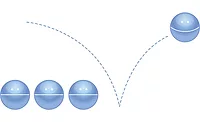Sharing the TiO2 Market
The Lebanese have an expression: “Don’t invite the bears to your vineyard,” Talal Al-Shair, chairman and CEO of Cristal, told a room full of titanium dioxide (TiO2) producers, feedstock suppliers and end-users at a recent TiO2 conference. Al-Shair, whose company produces TiO2 in Saudi Arabia, added, “All you big bears out there, you are not invited.”
He had good reason for giving the light-hearted warning before his talk on the Middle East TiO2 market. News that Huntsman Chemical would take a 70% stake in four of ICI’s businesses, including Tioxide, had just been announced. Speakers at the conference, held near Venice in mid-April, were there to provide perspective on the globalizing and consolidating marketplace.
The consensus was that prices will remain tight. The margins of TiO2 producers are too squeezed for any greenfield investments. Most have said they are after market share. Al-Shair knew, while there may only be a handful of “big bears” in the $7-billion worldwide TiO2 market, they are all hungry.
With the Huntsman/ICI news, the conference room got a little lighter as one question — who would buy Tioxide — was solved. Nearly two years after ICI announced the unit was up for sale, after one and one-half years of DuPont waiting for regulatory approval to buy a good deal of the operation, after the approval was denied and rumors of new potential acquirers circulated, Tioxide was finally out of limbo.
Now, however, suppliers are contemplating new mysteries with Huntsman. What are the company’s long-range plans for the world’s third-largest TiO2 producer? How will this move by a TiO2 outsider like Huntsman affect the market? TiO2 producers said that when DuPont was the likely buyer, at least, they had a sense of how it would absorb Tioxide. Will Huntsman, a newcomer in inorganic chemistry, shake up the market?
“It remains to be seen with Huntsman and this 70/30 joint venture,” Bruce A. Zwicker, Millennium Inorganic Chemicals (MIC) vice president of global coatings, told PCI the day of the announcement. “I don’t think that this is the end of the story of what happens next with Tioxide. I don’t know that the joint venture would just operate the TiO2 business as a joint venture indefinitely.”
Others at the conference expressed the same wonder. “Huntsman bought a package, other businesses, and part of that package was TiO2,” says Dr. Wolf-Dieter Griebler, president of German specialty TiO2 producer Sachtleben Chemie. Like Zwicker, he says it is too early to know Huntsman’s strategy.
“I think Huntsman has the capability to do what needs to be done in the Tioxide business,” including finding the financial resources needed to invest in the operation, says James R. Fisher, president and CEO of International Business Management Associates (IBMA), Princeton, NJ. Fisher opened the Intertech conference, which drew 198 attendeees, primarily management and marketing professionals. He says one of Huntsman’s characteristics is that it “knows what it doesn’t know” regarding inorganics. “The company is capable of learning how to handle this” and it will learn from ICI, he says. ICI is likely to hold on to its share of Tioxide for several years. “I think ICI had an interest in maximizing value in this transaction.”
Some questioned whether Huntsman is likely to sell off any of Tioxide’s assets. Fisher says this would be counterproductive, ‘There is more value in the whole than there is in pieces.”
Before the Huntsman/ICI news broke, Peter Woodward, senior vice president of chemical operations at Kerr-McGee Chemical (KMG), said he was disappointed that the DuPont/ICI deal failed. “We would have liked to see DuPont consolidate Tioxide.” The sentiment was echoed by other producers at the conference who had hoped DuPont would rationalize operations.
Last year, KMG acquired Bayer’s European TiO2 assets. “We saw the opportunity to not only buy capacity but to buy market share,” says Woodward, commenting on the acquisition as well as MIC’s acquisition of Rhône-Poulenc’s TiO2 operation in France and Tibras in Brazil.
Industry resources have been directed predominately toward consolidation, not new capacity, says Gary L. Cianfichi, MIC’s director of sales in Europe. He estimated that about 7% of TiO2 industry capacity, or 298,000 metric tons (MT), have changed ownership as a result of consolidations in 1998. Before the Huntsman buy, two producers — Bayer and Rhône-Poulenc — left the industry. This year with the Huntsman purchase, about 540,000 MT of TiO2, or 13% of the global market, have changed hands so far.
DuPont, MIC, Tioxide and NL Industries together have a 64% share of the TiO2 market. Adding KMG and Kemira to this group results in the top six TiO2 producers holding a 79% share of the world market, says Frank Mitsch, director of Deutsche Bank Securities, New York (see Table 1). He adds that if DuPont had been allowed to acquire Tioxide, DuPont would have owned one-third of the world market and TiO2 would have been 10% of DuPont’s business.
Mitsch, who likes to call the TiO2 market an oligopoly, says one result of the consolidation trend is that the smaller TiO2 producers (from the eighth largest down) have less ability to disrupt the world market. He says in 1989 these producers commanded some 27% of the world market and could more easily make an impact on pricing and competition than they could today with a 17% market share.
Citing statistics from the U.S. Commerce Department, IBMA and Deutsche Bank, Mitsch says current TiO2 inventories “are well in check but have required progressive moves by the leading producers.”
Producers say, as they have for the last two years, that they cannot afford to make any greenfield expansions in the near future. “Therefore, the stage is set for increasing capacity utilization rates over the next couple of years,” says Mitsch. Prices, he adds, will be flat for 1999, “which is significantly above the 1998 average.”
Cianfichi says the economic outlook for the TiO2 industry is “reasonably positive with some uncertainty.” He says 1998 demand was up modestly with little capacity growth and some capacity closed (see Table 2). He says producer inventories are at normal or very low levels and consumer inventories appear normal.
On pricing, several conference attendees said the Huntsman/ICI deal would be disruptive. IBMA’s Fisher, however, disagreed. “Huntsman paid a lot of money for Tioxide and it needs to have good returns to justify it and that means good pricing,” says Fisher. “Huntsman is going to be competitive but not disruptive.”
Mitsch says current TiO2 pricing is still below the 1989 to 1990 levels, as well as the levels reached in 1995 to 1996. “With reinvestment levels still significantly above current pricing, we ought to maintain decent levels of profitability for the foreseeable future, barring recessions or predatory pricing by an erstwhile supplier,” he adds.
“Since bottoming in early 1997, titanium dioxide has been one of the few, if only, chemical products to show meaningful increase in price,” says Mitsch. “However, some industry prognosticators have been waiting since Spring of 1998 for titanium dioxide prices to crack. The most recent price increase in North America was widely expected to fail, but did not. Our expectation is for flat pricing in 1999, which is significantly above the 1998 average.”
For the future, producers at the conference said the TiO2 industry, like the paint industry, will continue to consolidate. “The opportunity is out there for us to acquire additional capacity and that is going to be a viable strategy for us and our competitors” over the next several years, says Woodward.
He says the pricing environment will remain difficult with only “tactful” capacity additions. Customers, he adds, will continue to demand product improvements. To be successful in such a marketplace, he says, producers will need to control costs and improve productivity, a philosophy he summed up with his last presentation slide, which read, “He with the lowest cost wins.”
Looking for a reprint of this article?
From high-res PDFs to custom plaques, order your copy today!






